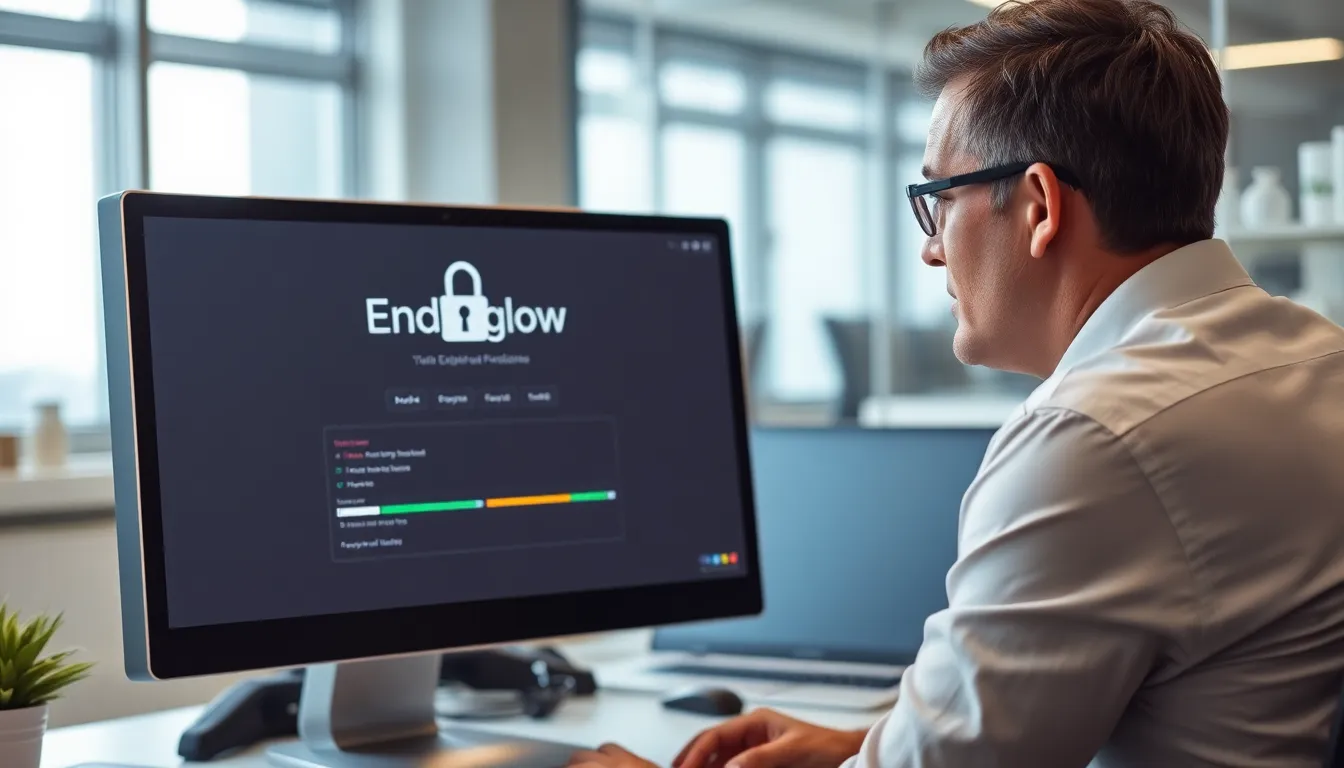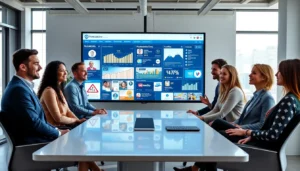In a world where cyber threats lurk around every digital corner, protecting software like Endbugflow isn’t just smart—it’s essential. Imagine your software as a prized pet; you wouldn’t leave it alone in a park full of hungry wolves, right? With the right strategies, Endbugflow can be safeguarded against those pesky intruders looking to cause chaos.
Table of Contents
ToggleImportance Of Protecting Endbugflow Software
Protecting Endbugflow software safeguards sensitive data and ensures uninterrupted functionality. Cyber threats pose a significant risk, with incidents increasing each year. Implementing robust security measures prevents unauthorized access and data breaches.
User trust relies heavily on the perceived security of the software. High-profile attacks can ruin reputations, driving users away. Maintaining a secure environment fosters customer loyalty and enhances the overall user experience.
Regulations and compliance mandates require organizations to prioritize software security. Non-compliance can result in heavy fines and legal repercussions. Adhering to industry standards supports a trustworthy image while preventing costly liabilities.
Investing in cybersecurity not only protects Endbugflow but also enhances operational efficiency. With proactive measures, organizations can identify vulnerabilities before adversaries exploit them. This dynamic approach to software protection encourages a culture of safety and diligence.
Continuous updates and monitoring form an essential part of any security strategy. Staying current with emerging threats allows teams to adapt and respond swiftly. Regular assessments ensure software remains resilient against evolving cybersecurity challenges.
Prioritizing protective measures for Endbugflow software is imperative. Investing in security leads to a stronger position against threats. Organizations that focus on protection bolster their reputation and ensure sustainable growth.
Common Threats To Endbugflow Software

Endbugflow software faces various threats that can significantly impact its security and functionality. Understanding these threats is essential for ensuring its protection and maintaining user trust.
Cybersecurity Risks
Cybersecurity risks encompass a range of threats that can compromise Endbugflow software. Malware can infiltrate the system, disrupting operations and leading to unauthorized access. Ransomware attacks can paralyze essential services, demanding payment to restore functionality. Phishing attempts frequently target users, tricking them into divulging sensitive credentials. Vulnerabilities in third-party integrations increase exposure, allowing attackers to exploit weaknesses. Continuous monitoring and proactive measures remain crucial for identifying and mitigating these risks.
Data Breaches
Data breaches pose severe challenges to Endbugflow software, often leading to compromised sensitive information. Unauthorized access can result in user data theft, damaging both reputation and user trust. High-profile breaches can draw regulatory scrutiny, resulting in heavy fines and legal consequences. Stolen data often gets sold on the dark web, causing long-term damage to affected organizations. Regular security audits and robust encryption techniques help safeguard data, reinforcing the importance of prioritizing software protection.
Best Practices For Protection
Protecting Endbugflow software involves a series of proactive measures that enhance security against threats. Organizations should adopt these best practices to ensure that the software remains secure.
Regular Software Updates
Regular updates play a crucial role in security management. Developers release patches to fix vulnerabilities and enhance security features, ensuring that Endbugflow software remains resilient. Moreover, automating update processes reduces the risk of overlooking critical patches. Outdated software often opens doors for cyber attacks, making timely updates essential for maintaining protection.
Implementing Strong Authentication
Strong authentication methods safeguard user access effectively. Utilizing multi-factor authentication adds an additional layer of security, significantly reducing unauthorized access risks. Password policies must enforce complexity and periodic changes to mitigate vulnerabilities. Training employees on secure login practices and phishing recognition further strengthens the defense perimeter. Ensuring that only authorized personnel access sensitive data fortifies the protection of Endbugflow software.
Data Encryption Techniques
Data encryption serves as a frontline defense against data breaches. Encrypting sensitive data at rest and in transit ensures that unauthorized users cannot access vital information. Utilizing advanced encryption standards, such as AES-256, provides robust protection for stored data. Regularly reviewing encryption protocols ensures they meet evolving security standards. Ensuring that data remains confidential contributes to maintaining user trust and protecting the organization’s reputation.
Role Of User Training And Awareness
User training plays a critical role in the protection of Endbugflow software. Engaging users through tailored training sessions enhances their understanding of potential cybersecurity threats. Enhancing awareness among users of common risks, such as phishing attacks and malware, reduces the likelihood of falling victim to cyber incidents.
Training sessions should include practical exercises that simulate real-world scenarios. Employees who practice identifying phishing emails develop higher vigilance against such threats. It’s essential for organizations to foster a culture of security awareness, encouraging users to report suspicious activities promptly.
Regular updates to training materials keep pace with evolving threats. Organizations that adapt training content based on recent cyber incidents reinforce their security posture. Including information about recent high-profile attacks can motivate employees to take security more seriously.
Measuring the effectiveness of training programs is crucial. Surveys and assessments can gauge user understanding and retention of security protocols. By analyzing this data, organizations can identify knowledge gaps and address them accordingly.
Awareness campaigns that utilize multiple communication channels further promote security best practices. Visual reminders, newsletters, and workshops can keep security at the forefront of employees’ minds. Continuous user education cultivates a proactive approach to cybersecurity, enhancing the protection of sensitive data in Endbugflow.
Employees equipped with robust security knowledge serve as the first line of defense against attacks. A well-informed workforce can create a secure environment that minimizes risks associated with unauthorized access and data breaches. Prioritizing user training and awareness establishes a foundation for effective software security measures and strengthens overall organizational resilience.
Protecting Endbugflow software is essential for maintaining data integrity and operational continuity. By prioritizing cybersecurity measures organizations can significantly reduce the risk of data breaches and unauthorized access. This proactive approach not only safeguards sensitive information but also enhances user trust and loyalty.
Regular updates and user training play a critical role in establishing a robust security posture. As cyber threats evolve organizations must remain vigilant and adaptable. Fostering a culture of security awareness empowers employees to recognize and respond to potential risks effectively.
Ultimately investing in the security of Endbugflow software is a strategic move that supports long-term organizational success and protects against the repercussions of cyber incidents.










